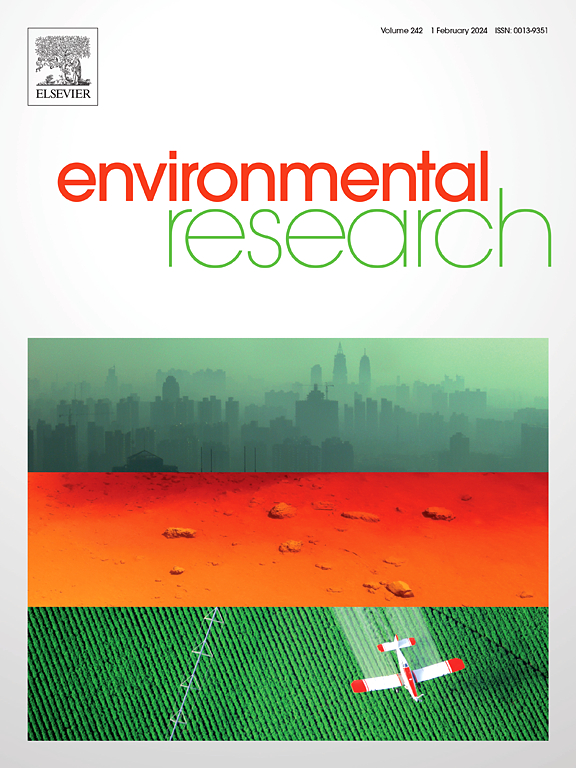Co-existence strategies and carbon sequestration contributions of bacterial generalists and specialists in natural wetlands under land use and land cover change
IF 7.7
2区 环境科学与生态学
Q1 ENVIRONMENTAL SCIENCES
引用次数: 0
Abstract
The function of natural wetlands (NW) as carbon sinks or sources is largely determined by the bacterial community structure, diversity, and function metabolism. However, the responses of generalists and specialists to changes in soil organic carbon (SOC) from NWs undergoing land use and/or land cover change (LULCC) remain unclear. In this study, using 1124 amplicon samples and associated environmental parameters for NWs and corresponding LULCC types globally, the distribution patterns of generalists and specialists, species coexistence, assembly processes, and responses to SOC were evaluated. The findings indicated that generalists rather than specialists exhibited higher Bray–Curtis dissimilarity indices and turnover rates following LULCC. Generalists and specialists had smaller niche overlap indices and more complex co-occurrence network topological parameters after LULCC. This means that species interactions transitioned from competition to cooperation following LULCC, primarily driven by an increasing influence of deterministic processes. Notably, when NWs were converted into LULCCs, the metabolic abundance and functional redundancy of generalists gradually decreased, while specialists showed the opposite trend. This shift in functional metabolism is the main driver of the decline in carbon content. Because generalists’ metabolic abundance showed a transition from a positive (slope = 4.136, p = 0.026) to a negative (slope = −1.598, p = 0.008) correlation with SOC from NW to LULCC, while specialists exhibited a progressively stronger negative response (slope = −1.980, p = 0.026). Specifically, the response relationship between total community metabolic abundance and SOC content shifted from positive to negative, with a stronger negative response. This undoubtedly has a negative impact on the carbon sequestration in native ecosystems after LULCC. Changes in local environmental factors were identified as the primary cause of this phenomenon. Overall, these findings provide a theoretical basis for refining carbon cycle models that incorporate bacterial generalists and specialists.
土地利用和土地覆盖变化下天然湿地细菌通才和专才的共存策略和固碳贡献
天然湿地作为碳汇或碳源的功能在很大程度上取决于细菌群落结构、多样性和功能代谢。然而,在经历土地利用和/或土地覆盖变化(LULCC)的西北地区,通才和专家对土壤有机碳(SOC)变化的反应尚不清楚。本研究利用1124个扩增子样本和相关环境参数,分析了全球NWs和相应的LULCC类型的多面手和专能手的分布格局、物种共存、组装过程和对SOC的响应。结果表明,通才比专才表现出更高的Bray-Curtis差异指数和离职率。通才型和专才型的生态位重叠指数更小,共现网络拓扑参数更复杂。这意味着物种间的相互作用在LULCC之后由竞争转变为合作,主要是由确定性过程的影响增加所驱动的。值得注意的是,当NWs转化为lulcc时,通才的代谢丰度和功能冗余度逐渐降低,而专才则相反。这种功能性代谢的转变是碳含量下降的主要驱动力。因为通才的代谢丰度与从NW到LULCC的SOC呈正相关(斜率= 4.136,p = 0.026)向负相关(斜率= - 1.598,p = 0.008)转变,而专才的代谢丰度表现出越来越强的负相关(斜率= - 1.980,p = 0.026)。群落总代谢丰度与有机碳含量的响应关系由正向负转变,负响应更强。这无疑会对LULCC后原生生态系统的固碳产生负面影响。当地环境因素的变化被认为是造成这一现象的主要原因。总的来说,这些发现为完善包含细菌通才和专家的碳循环模型提供了理论基础。
本文章由计算机程序翻译,如有差异,请以英文原文为准。
求助全文
约1分钟内获得全文
求助全文
来源期刊

Environmental Research
环境科学-公共卫生、环境卫生与职业卫生
CiteScore
12.60
自引率
8.40%
发文量
2480
审稿时长
4.7 months
期刊介绍:
The Environmental Research journal presents a broad range of interdisciplinary research, focused on addressing worldwide environmental concerns and featuring innovative findings. Our publication strives to explore relevant anthropogenic issues across various environmental sectors, showcasing practical applications in real-life settings.
 求助内容:
求助内容: 应助结果提醒方式:
应助结果提醒方式:


